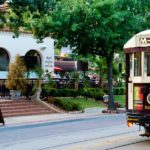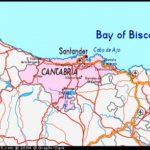
There’s a couple of interesting customs which make Navidad in The country so unique, and the merriment moving in between your religious celebrations that comprise this holidays. Spanish Christmas traditions are carefully associated with the Catholic customs, with festivities running right from the start of December until Epiphany, the 6th of The month of january.
Christmas traditions in The country begin around the 8th of December, using the Immaculada, the feast from the Immaculate Conception. As The country’s patron Saint, the Virgin Mary plays a significant part in Spanish festive customs. This very day also marks the start of the religious Christmas traditions in The country. Christmas trees are typical throughout The country, much like elaborate nativity scenes known as Belénes, which always includes the infant Jesus, Mary, Frederick and also the Three Nobleman.
The 21st and 22nd of December are non-Catholic Christmas celebrations in The country. The celebration of Hogueras happens around the 21st, the wintertime solstice or even the shortest night of the season, which tradition really predates the religious festivities. People jump through bonfires as symbolic protection against illness. The very next day sees a Christmas tradition in The country that goes back to 1812. El Gordo, (body fat one) may be the Christmas lottery draw, where,aside from the three big prizes there are millions of smaller sized prizes won throughout The country.
December 24th, or even the Nochebuena, is possibly the most crucial from the Spanish Christmas traditions. The Christmas Eve National Speech, known as the el Discurso Nacional in The country, continues to be broadcast by King Juan Carlos I each year since 1975. Traditional Christmas food in The country largely depends upon the location, but Pavo Trufado de Navidad (Christmas poultry with truffles) is really a typical primary course, adopted by deserts of figuras de mazapán(marzipan figures), polvorones (crumbly cinnamon cakes),or turrón(a sweet almond nougat). These sweets are a crucial part from the Spanish Christmas tradition. At night time, the church bells toll, and families visit ‘La Misa Del Gallo’ (The Mass from the Rooster). Based on the old Spanish verse, Esta noche es Noche-Buena, Y no es noche de dormir (It’s Christmas Eve, therefore it’s not really a night for sleeping)!

Xmas Day is spent at church with family. The 25th isn’t as vital that you the Spanish as Christmas Eve. The 28th of December is called your day of Santos Inocentes (or Holy Innocents Day). This is actually the Spanish same as April Fools’ Day when individuals play practical jokes on each other, as well as the Spanish media become involved. NocheVieja , Year’s Eve in The country carries traditions of their own. Around the stroke of night time 12 grapes are eaten, (las uvas en suerte) one on every chime, to create luck for that incoming year.
On The month of january 6th the Feast from the Epiphany marks the finish of Christmas traditions in The country, and it is celebrated because the day once the Three Nobleman showed up in Bethlehem. While Father Christmas leaves something small for kids around the 25th, Los Reyes Magos typically bring gifts in The country. You will find parades yesterday to celebrate the appearance of the 3 Nobleman and at night Spanish children leave their footwear filled with straw for that Nobleman’ donkeys to consume. By morning, presents have made an appearance there.
Resourse: http://spanishunlimited.com/the country/culture/2012/12/








